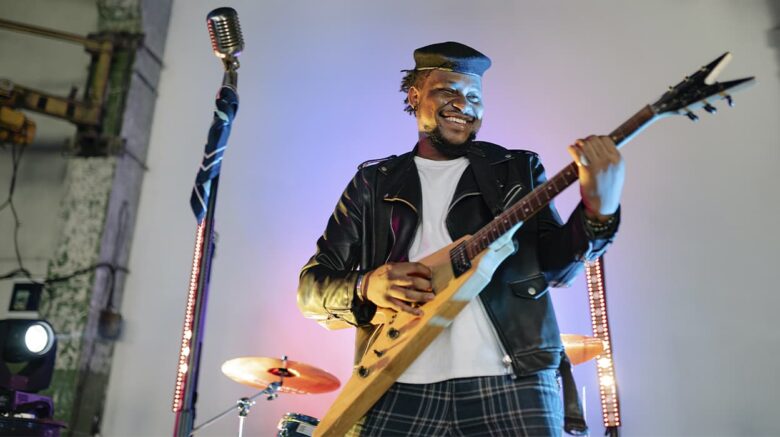Despite the wide variety of subgenres and styles, indie music is quite simple in terms of instruments. I would put indie on a spectrum with rock at one end, rap at the other, and pop in the middle.
Indie rock.
Towards this end of the spectrum, artists tend to use traditional rock band instruments: electric guitar, electric bass, analog drum kit, and synthesizer/digital piano.
Classical guitars are the most popular in this genre, with Stratocasters, Telecasters, 335s, Les Pauls, and Jazzmasters being the most common. The traditional single-cutaway sound can set the tone for most indie bands.
Acoustic guitars are also common for a more intimate sound on select tracks, but are not as commonly seen as electric guitars.
Bass guitars used in indie music are usually Jazz Bass or Rickenbacker, but a P-Bass or Bronco can produce sounds very similar to Jazz Bass. Synthetic basses are less common. 808 basses are almost unheard of on this side of the spectrum.
Analog drums are much more common on the rock. Even if you don’t play the drums yourself, using an analog VST sample rather than an electronic 808-based kit will give you the sound.
Indie pop
This style is usually lighter than rock or rap and more flexible in its instrumentation. Artists range from guitar to synthesizer harmonies, and the drums are usually loops with analog or digital kits. Piano is becoming more prominent here, as well as digital bass tones.
Guitars are still widely used, and they still have classic shapes such as Stratocasters and 335s. Acoustic guitars are very much in use, especially among the “singer-songwriter” types whose musical focus is on melody and storytelling rather than expansive arrangement.
Pianos and synthesizers are often used to complement the chords and bass. Expect to hear ambient pads or reverb-heavy electric piano emulations.
Digital bass is becoming increasingly common in pop music as we move away from traditional rock bank formats, as most indie pop artists are solo musicians who add bass lines during production or “in the box” (meaning electronically in the DAW itself, rather than using analog equipment that must first be recorded). Bass lines are likely to be instant retro grooves played on synthesized slap bass presets, compressed digital piano notes, or thick, buzzy square waves.
Digital drums are likely to be programmed into the DAW as basslines, but many indie pop artists still work with analog samples to get a more traditional rhythmic tone. Electronic samples are common, but they follow simpler patterns than rap, especially for hi-hats.
